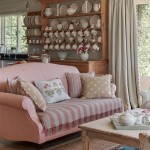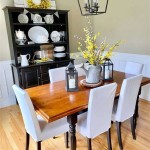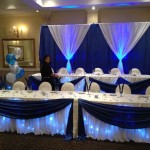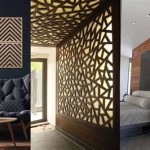How to Decorate a 60s House
The 1960s was a decade of dramatic shifts in societal norms, fashion trends, and, of course, interior design. Marked by bold colors, geometric patterns, and a futuristic optimism, decorating a house in the style of the 60s requires a thoughtful approach. It is more than simply adding a lava lamp; it involves understanding the core principles of the era and applying them in a cohesive and stylish manner. This article provides a guide to decorating a house in the iconic style of the 1960s, addressing key aspects of color palettes, furniture choices, and accessory selection.
Embracing the 60s Color Palette
Color is arguably the most defining element of 1960s interior design. It moved away from the muted tones of the previous decade and embraced vibrancy and boldness. The color palette was diverse, ranging from psychedelic brights to earthy neutrals, often used in contrasting combinations. Understanding the nuances of this color spectrum is essential for achieving an authentic 60s aesthetic.
Bright, saturated colors like avocado green, burnt orange, mustard yellow, and hot pink were heavily favored. These colors were often used on walls, furniture, and even appliances. Consider incorporating these hues through statement pieces such as a brightly colored sofa, an accent wall, or patterned rugs. The goal is not necessarily to use all these colors in one room, but to choose a few key colors that complement each other and represent the spirit of the era.
On the other hand, a concurrent trend involved earthier, more muted tones. Think browns, beiges, and olive greens. These colors provided a grounding effect, often paired with pops of the brighter shades. Using brown shag carpeting or wooden furniture can offer a neutral backdrop against which brighter accessories and wall art can truly stand out. Furthermore, the use of white or off-white was common for walls and ceilings, acting as a neutral canvas to showcase the bolder elements of the decor.
High-contrast color combinations were also a hallmark of the decade. Black and white, orange and blue, or pink and green were popular choices. These pairings created visual interest and added a dynamic energy to the space. A black and white geometric rug, for instance, placed on a brightly colored floor can create a striking visual effect. This approach requires careful consideration of the specific colors and their placement to achieve a balanced and harmonious result.
When choosing paint colors, consider the natural light in the room. Brighter colors can enhance rooms with ample sunlight, while earthier tones may be more suitable for spaces with less natural light. Pay attention to the undertones of the colors to ensure they complement other elements of the decor. Ultimately, the color palette should reflect the overall mood and atmosphere of the space, capturing the optimistic and energetic spirit of the 1960s.
Selecting 60s-Inspired Furniture
Furniture design in the 1960s was characterized by its sleek lines, minimalist forms, and innovative use of materials. The emphasis was on functionality and comfort, combined with a sense of futuristic design. When decorating a 60s house, selecting the right furniture is crucial to achieving an authentic and stylish look.
Mid-century modern furniture styles were heavily influential during this period. Pieces like Eames chairs, tulip tables, and Danish modern sofas were popular choices. These designs are defined by their clean lines, organic shapes, and use of materials like molded plastic, wood, and chrome. Incorporating these classic mid-century pieces into your decor can instantly evoke the 60s aesthetic. Vintage furniture stores and online marketplaces are excellent resources for finding authentic mid-century furniture.
Upholstery plays a significant role in defining the 60s furniture style. Bold patterned fabrics, vinyl, and bright solid colors were commonly used. Consider reupholstering existing furniture with fabrics that reflect the 60s color palette and patterns. Geometric prints, floral motifs, and abstract designs were all popular choices. The texture of the fabric also matters; velvet, corduroy, and even shiny vinyl can add a tactile dimension to the furniture.
Modular furniture was another key trend of the 1960s. Sectional sofas, modular shelving units, and stackable chairs offered flexibility and adaptability. These pieces allowed homeowners to customize their living spaces to suit their needs and preferences. Modular furniture can be especially useful in smaller spaces, as it can be easily reconfigured to create different seating arrangements or storage solutions.
In addition to sofas and chairs, coffee tables and side tables played an important role in the 60s living room. Low-slung coffee tables with clean lines were a popular choice, often made of wood or glass. Side tables with hairpin legs or minimalist designs were also common. These tables served both functional and aesthetic purposes, providing a place to display accessories or hold drinks and snacks.
When selecting furniture, consider the scale and proportion of the pieces in relation to the room. Avoid overcrowding the space; instead, focus on creating a comfortable and uncluttered environment. Mixing and matching different styles and textures can add visual interest, but it’s important to maintain a cohesive overall look. Aim for a balance between functionality, comfort, and aesthetic appeal to create a living space that truly reflects the 60s style.
Incorporating 60s Accessories and Décor
Accessories and décor are integral to completing the 60s look. These elements add personality, visual interest, and authenticity to the space. From lighting to wall art to decorative objects, carefully chosen accessories can transform a room and capture the spirit of the decade.
Lighting fixtures were key design elements in the 1960s. Lava lamps, Sputnik chandeliers, and mushroom lamps were all popular choices. These lighting fixtures not only provided illumination but also served as decorative focal points. Lava lamps, with their mesmerizing movement and vibrant colors, are particularly iconic of the era. Sputnik chandeliers, with their radiating arms and futuristic design, added a touch of glamour and sophistication. When selecting lighting, consider the overall style of the room and choose fixtures that complement the furniture and color palette.
Wall art played a significant role in 1960s interior design. Abstract paintings, pop art prints, and psychedelic posters were commonly used to add color and visual interest to the walls. Artists like Andy Warhol and Roy Lichtenstein were highly influential during this period, and their works reflected the cultural and artistic trends of the time. When choosing wall art, consider the size and scale of the pieces in relation to the wall space. A large statement piece can create a dramatic focal point, while a collection of smaller prints can add a more subtle touch.
Textiles and patterns were used extensively in the 1960s to add texture and visual interest to the space. Geometric prints, floral motifs, and abstract designs were commonly used on curtains, rugs, and throw pillows. Shag rugs were particularly popular, providing a soft and luxurious underfoot feel. Consider incorporating these patterns and textures through various accessories, such as throw pillows, blankets, and wall hangings. The goal is to create a layered and visually rich environment that reflects the eclectic and dynamic style of the 1960s.
Decorative objects helped to personalize the space and reflect the homeowner's individual tastes. Ceramic vases, vintage telephones, and mid-century modern figurines were all popular choices. Consider displaying these objects on shelves, coffee tables, or side tables to add visual interest and personality to the room. Vintage stores and flea markets are excellent resources for finding authentic 60s decorative objects. Remember to curate the collection carefully, selecting pieces that complement the overall style and color palette of the room.
Plants were another important element of 1960s interior design. Indoor plants added a touch of nature and freshness to the space. Popular choices included ferns, spider plants, and snake plants. These plants not only added visual appeal but also helped to purify the air and create a more relaxing and inviting atmosphere. Consider displaying plants in ceramic pots or hanging planters to further enhance the 60s aesthetic.
By carefully selecting and incorporating these accessories and décor elements, it is possible to create a truly authentic and stylish 60s house. The key is to pay attention to detail, curate a collection of pieces that reflect the spirit of the decade, and create a space that is both visually appealing and personally meaningful.

Interior Home Decor Of The 1960s Ultra Swank

Home Decor Of The 1960 S

15 Colors To Decorate With For A 60s Aesthetic

House Interior Design By Decade Mcarthur Homes

Hippie Decor More 1960s Interior Design Ideas 15 Pages Of Rooms From 1969 Retro Renovation

Woman Transforms Her Home Into 60s And 70s Inspired Shrine All For 2 500 The Mirror

Interior Home Decor Of The 1960s Ultra Swank

Interior Home Decor Of The 1960s Ultra Swank

Interior Home Decor Of The 1960s Ultra Swank

230 Best 1960s Home Decor Ideas
Related Posts







